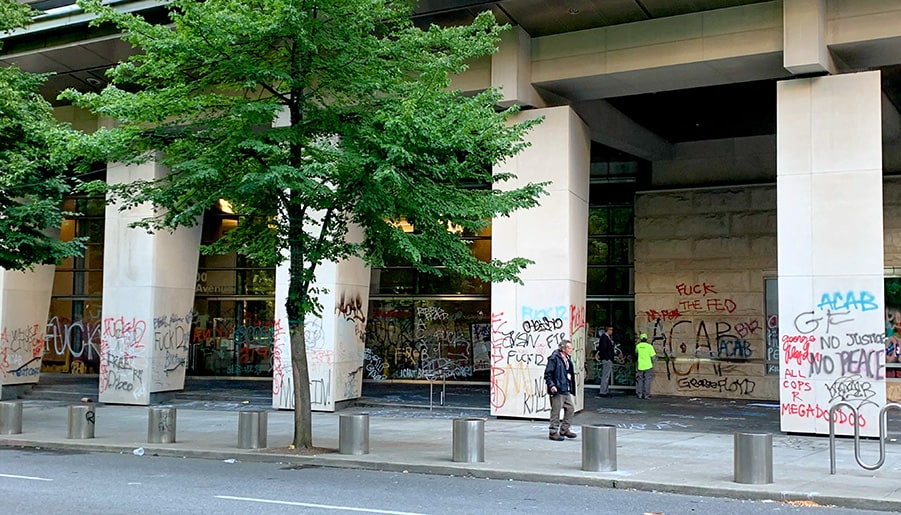From Damage To Defense
Portland's Courthouse Reinforced with Schweiss Security Doors
For over a year starting in the spring of 2020 the Mark O. Hatfield United States Courthouse in Portland, Oregon found itself in the middle of months of civil unrest. The courthouse endured millions of dollars in damages from shattered windows, graffiti, and fires.
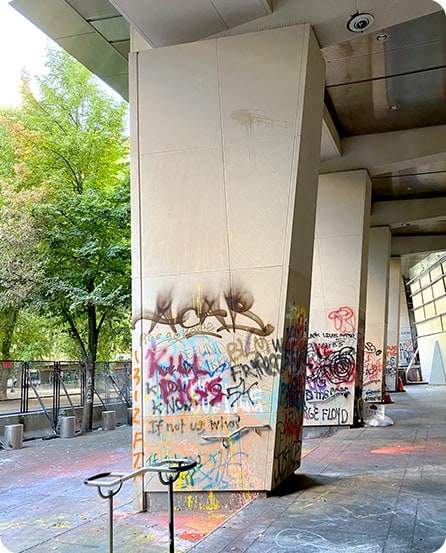 Vandals Left Their Mark On The Building
Vandals Left Their Mark On The Building
Long after the daily protests had waned, a tall security fence surrounded the courthouse, keeping it cut off from the rest of downtown. The fence would finally come down only after 7 specially engineered bifold security doors from Schweiss Doors were installed, creating a more secure courthouse.
The doors were part of upgrades at the courthouse that followed the protests and riots. The federal government had appropriated hundreds of millions of dollars to secure the nation’s federal courthouses. Door improvements were one way to respond to that mandate.
“That courthouse got a lot of damage and they wanted to harden it,” said Theresa Brophy, president of RJK Construction, the general contractor for the project. “The government wanted to avoid all the damage that could take place. They wanted to be able to lock down the building but do it in a manner that didn’t look like a fortress at the end of the day.”
The unique structure and design of the courthouse required a creative solution. The public entry into the courthouse, on the western side of the building, is faced with several limestone pillars that direct people toward the main glass doors into the courthouse lobby. Any new security door feature would need to fit in between those pillars and be installed without requiring significant structural changes to the courthouse.
Several ideas were discussed, including installing roll down or sliding doors. It was the project’s architect, Soderstrom Architects, who had the idea of installing steel covered bifold doors between the pillars. The doors could then be lowered to completely block off the entrance into the courthouse.
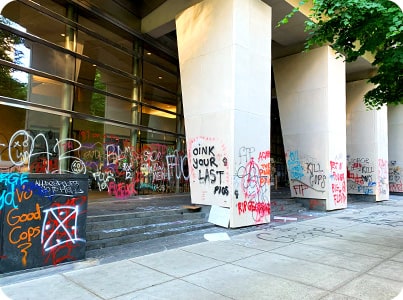 Before
Before
 After
After
“It was just a unique idea that it went with the architecture of the building, and we could configure the Schweiss doors to fit,” Brophy said.
Schweiss Doors was chosen as the door manufacture. Yet this wouldn't be your run of the mill door project. First the door had to prove it could withstand extensive testing including three 30-minute force entry test and a one hour long simulated break in. Working with KPFF, a structural engineering firm, RJK Construction and Schweiss Doors designed and engineered the steel framework of the door to hold up to all sorts of abuse.
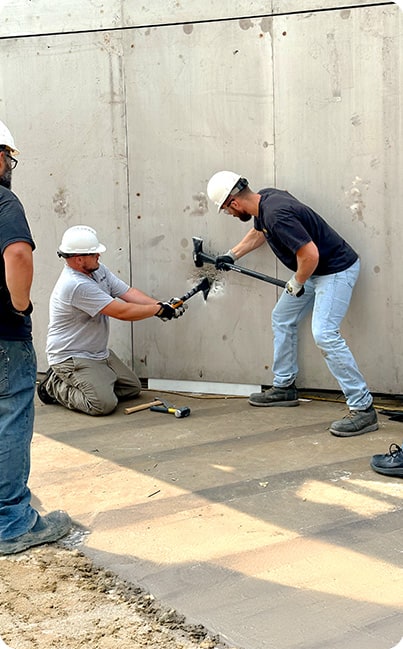 Simulated Break-Ins Were Performed
To Ensure The
Simulated Break-Ins Were Performed
To Ensure The
Doors Would Keep
Bad Boys Out!
“We established how we could clad and reinforce the Schweiss Doors in order to get that 30-minute force entry rating,” Brophy said.
A test door was sent to Intertek in Baltimore, a quality assurance firm. The Intertek group tested the door frame and the special made steel plate brackets by Schweiss Doors, along with the steel sheeting created by Hanset Stainless that would cover the door and other areas of the courthouse entrance. The complete door package went through a battery of tests that included being beat with sledgehammers, stabbed with chisels and cut into by axes. It took a few tweaks to the design, but the door and cladding passed the test.
“This is not your typical airplane hangar door, there is something more to this door,” Brophy said.
Once it passed the force entry test, 7 of the exclusively designed Schweiss lift strap bifold doors, with the automatic strap latch were ordered for the project by Overhead Door Company of Portland, who were hired to install the doors.
“It was a unique project for us, we actually had never done this style of security door before,” said Ryan Stumpf, president of Overhead Door Company of Portland.
Six of the doors were 12-foot-8-inches by 13-foot-9.5-inches and the final door was 10-foot 7.25 inches by 13-foot-9.5 inches, perfectly sized to fit between the limestone pillars. The doors also included several safety features including top override switches, electric photo eye sensors, warning lights and horns and emergency back-up hand cranks in case the power goes out. The doors are able to open or close in 47 seconds.
Another interesting aspect of the doors was the weight. Since they had to be constructed to withstand a lot of force, they were manufactured with heavier gauge tubing than a standard bifold door frame.
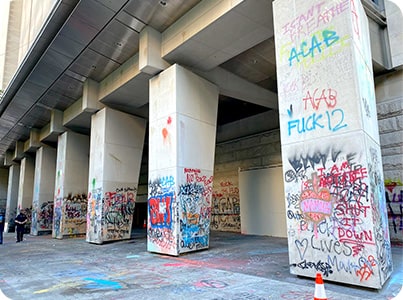 Before
Before
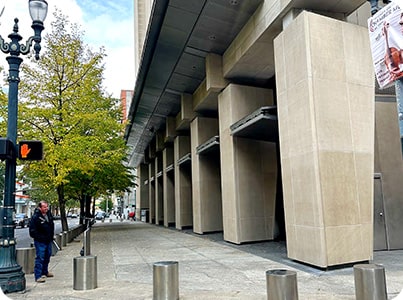 After
After
“Just one of them weighed as much as doors Schweiss as done that were four times the size. That is kind of mind blowing when you think about it,” Stumpf said.
An install supervisor from Schweiss Doors traveled to Portland to assist the team from Overhead Door. He was there to make sure the doors were installed correctly so they would work as designed. It took about four days to mount all the doors.
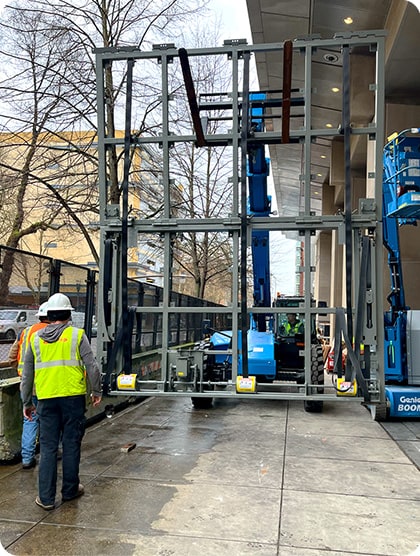 Built To Handle
Built To Handle
What Others Can't!
“The Schweiss Doors install supervisor really helped get us off on the right foot. He helped us get the first four installed and then we took it from there,” Stumpf said.
A challenge the install crews had to work around was the site itself. There wasn’t a lot of space to move people and equipment, especially with the security fence still up, and the limestone pillars of the courthouse required a steady hand when moving the door frames into place. “It took a lot of pre-planning on the safety side and a lot of people communicating with one another,” Stumpf said.
Both Brophy and Stumpf said Schweiss Doors was a great partner in the whole endeavor, starting from the earliest days as the doors were being designed.
“We worked directly with Schweiss Doors quite a bit. The team over there was great. We had all these very specific things that had to fit together to make this work,” Brophy said.
Stumpf hopes that this will be the first of many projects he gets to do with Schweiss Doors. “Working with Schweiss was wonderful. I think the ordering process was great and a lot of heavy lifting was done by the Schweiss Doors team. It wasn’t a standard turnaround time design wise and drawings wise because they had to meet these new specifications,” Stumpf said. Now that the project is complete and the chain link security fence has been removed, visitors to the Mark O. Hatfield US Courthouse can get a close look at these special Schweiss bifold doors.
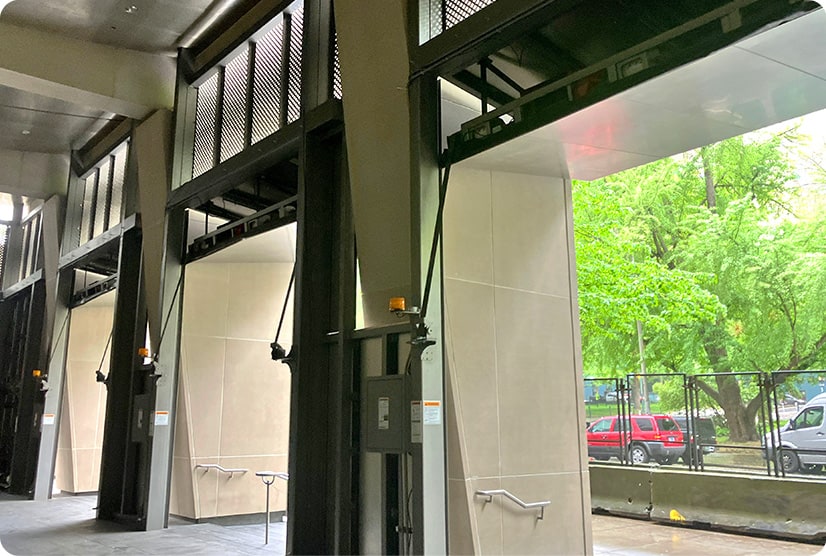 When It Has To Work,
When It Has To Work,
It Has To Be Schweiss!
During the day the doors are open, providing access to the courthouse, but each night they are closed, creating a secure barrier. But it is a barrier that melds with the contemporary design of the courthouse and doesn’t look out of place.
“This was a very unique project for the Schweiss Doors team and for the RJK Construction team,” Brophy said. “We are so pleased that it all came together.”
“The bifold doors definitely gives the building a really unique look, I think it looks really good,” Stumpf said. “It is a prominent building in our city and one that is known. Anytime you do something like this, you want it to look good and it does.”

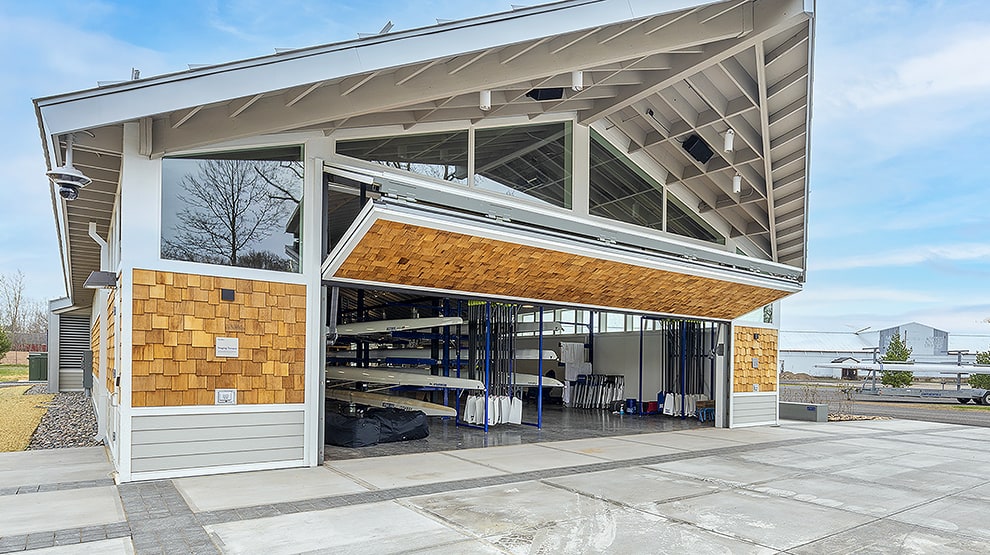
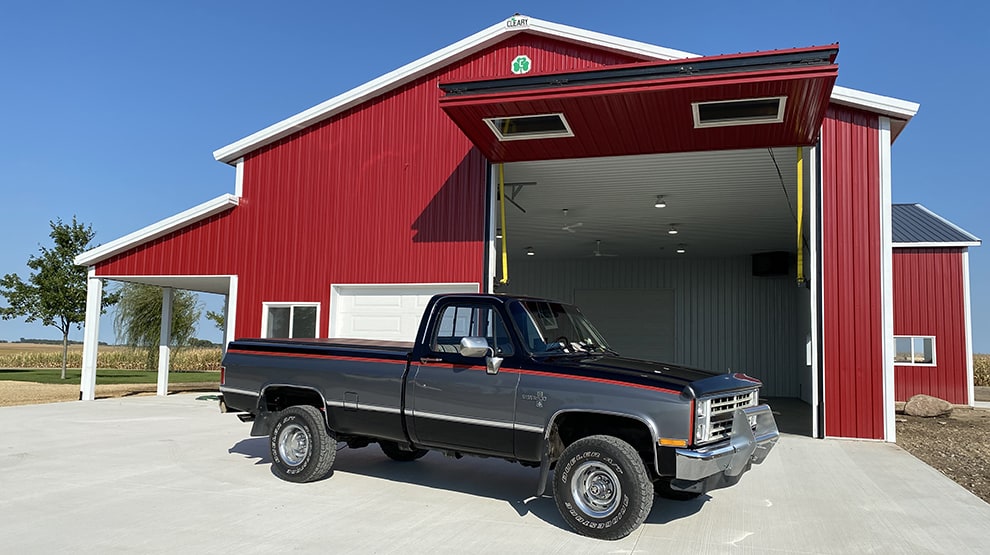
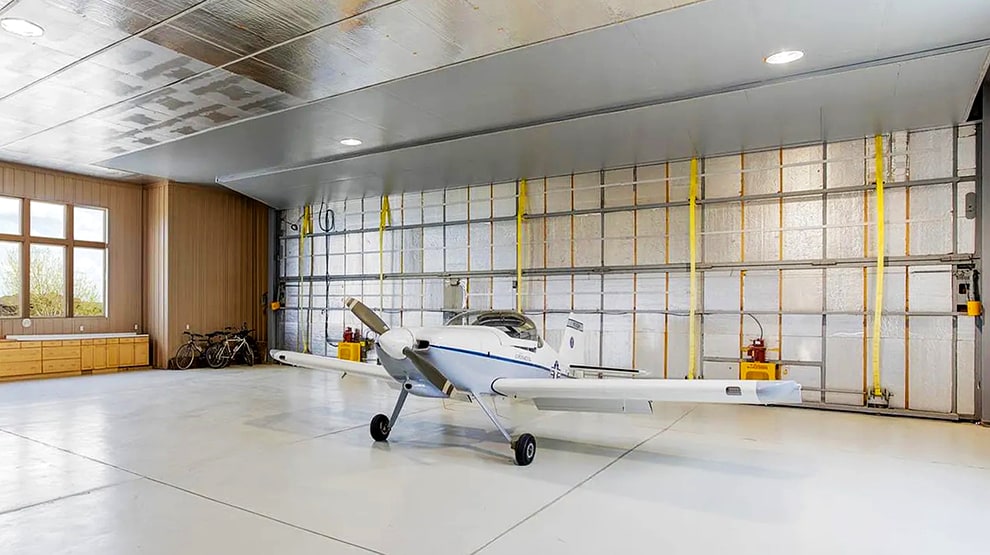


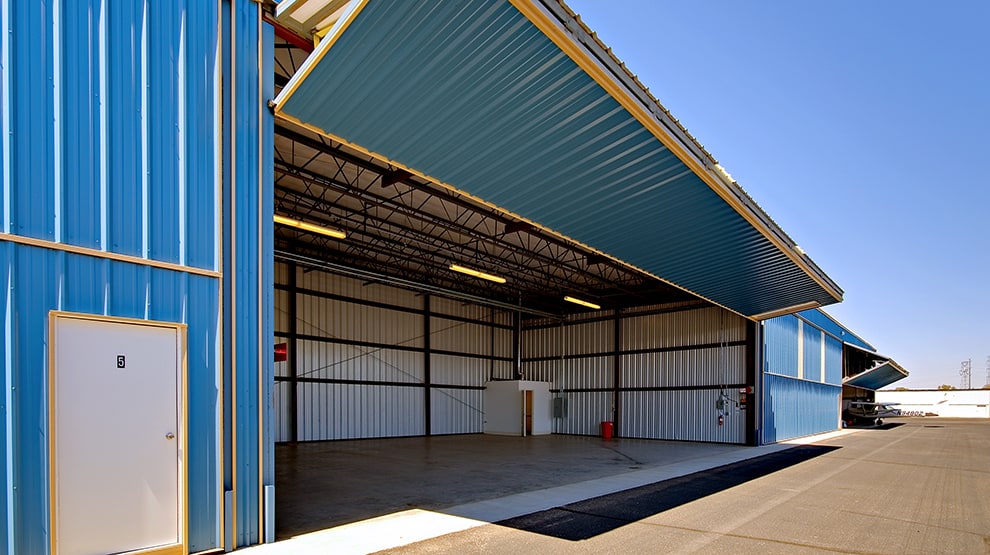
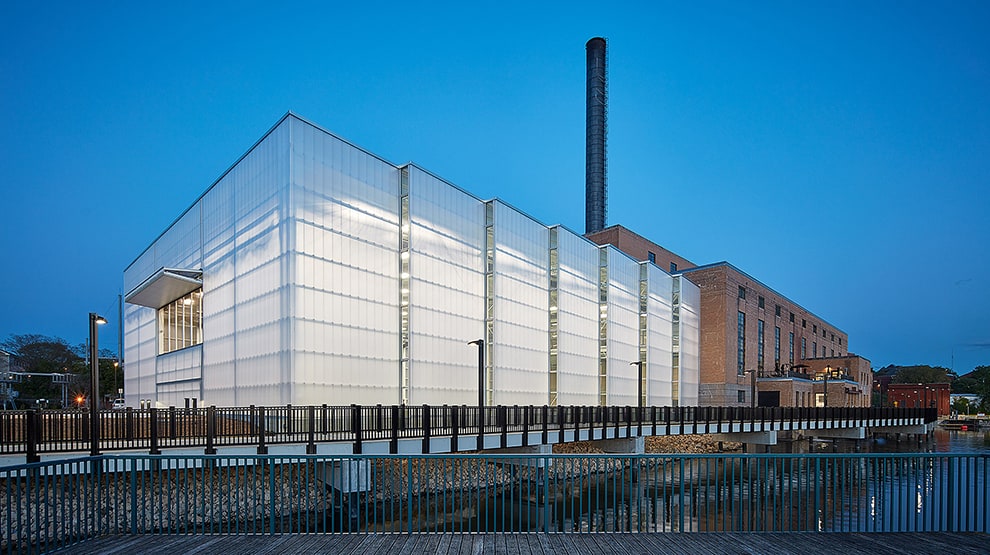
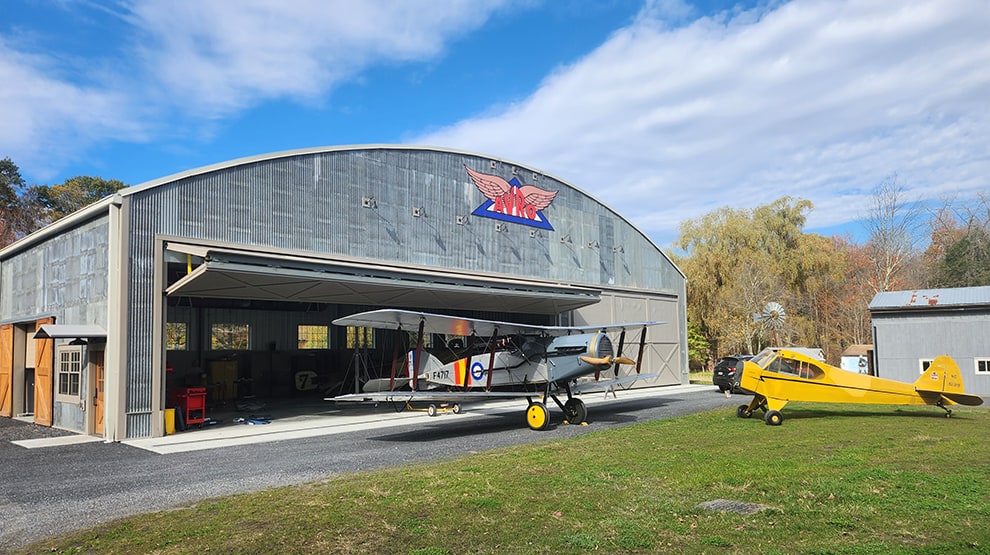
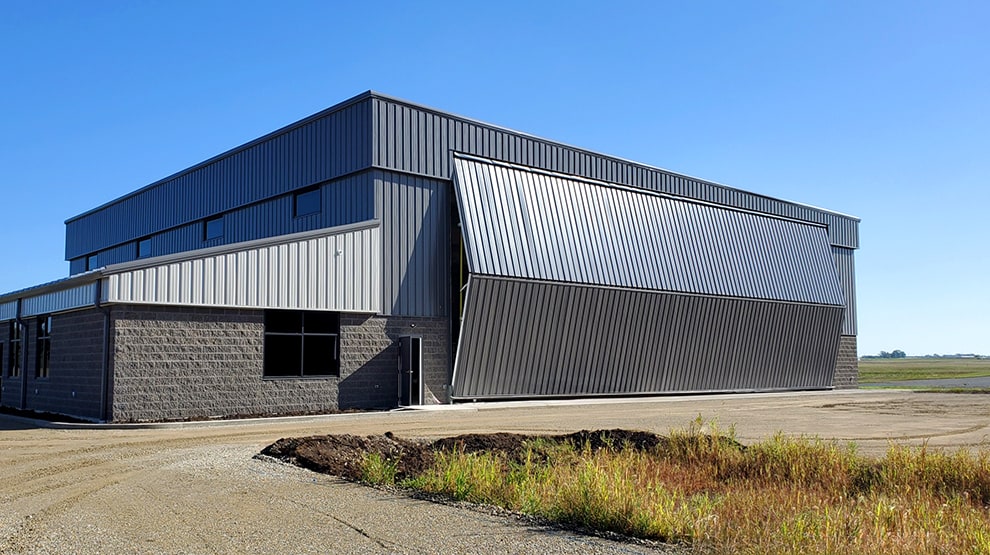


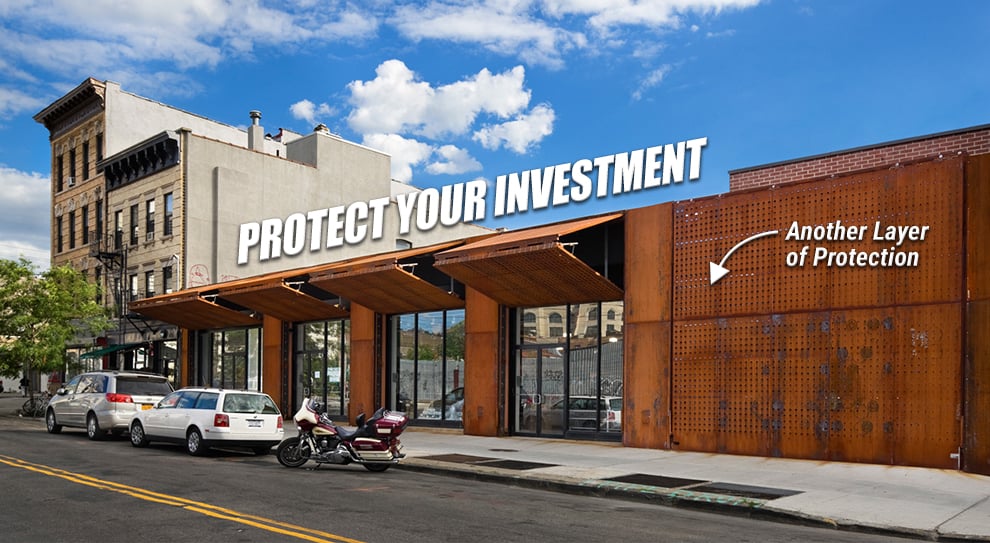

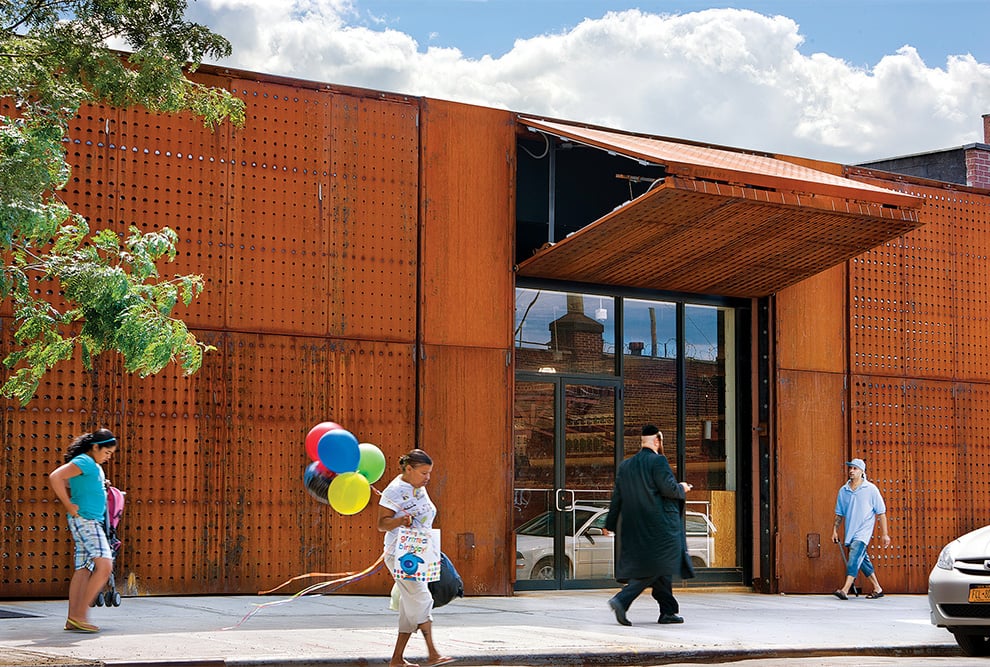


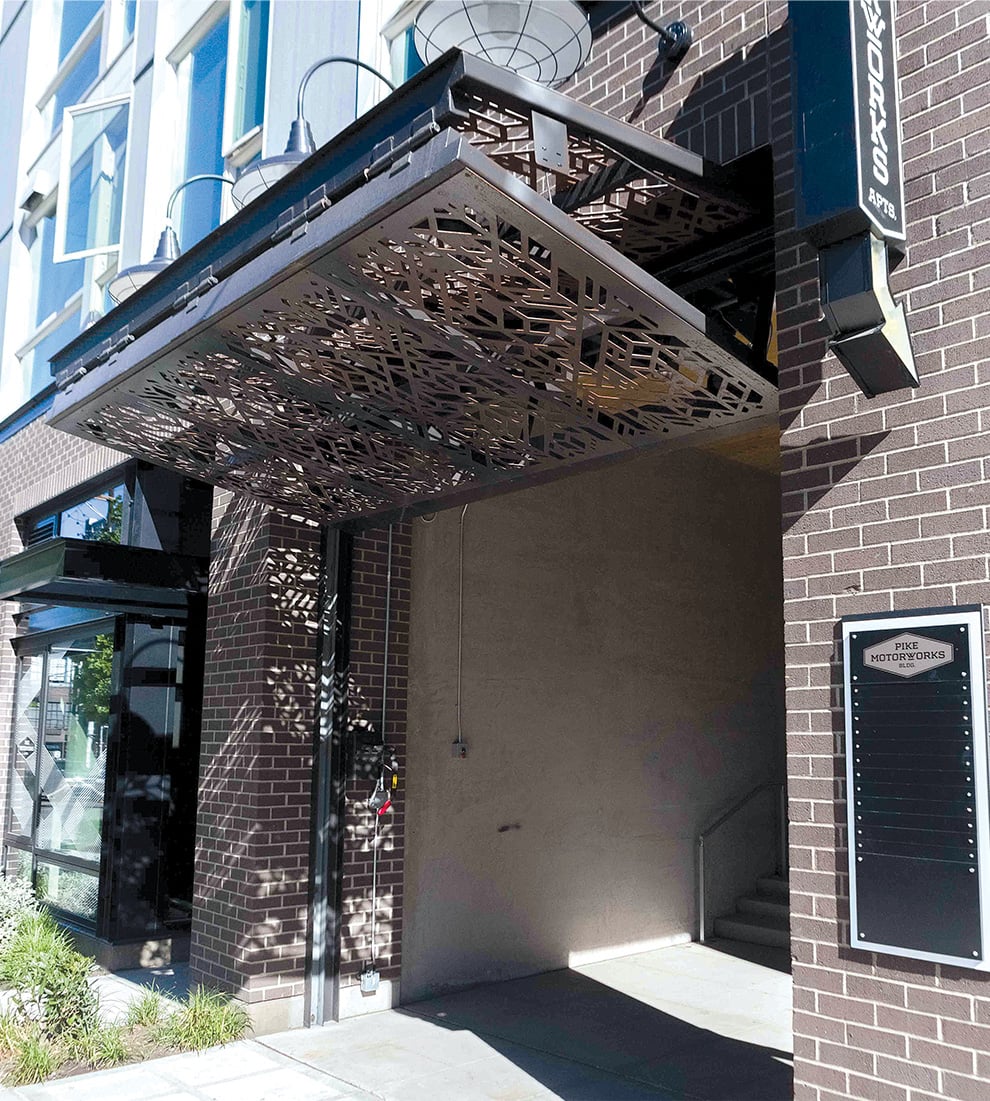
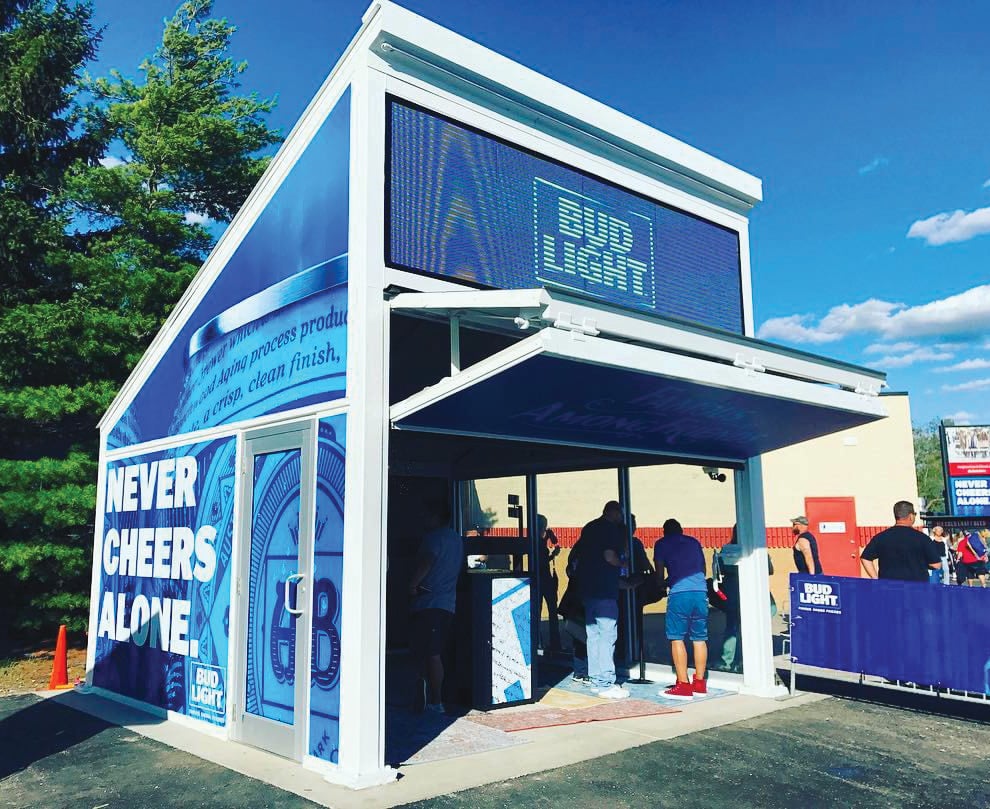
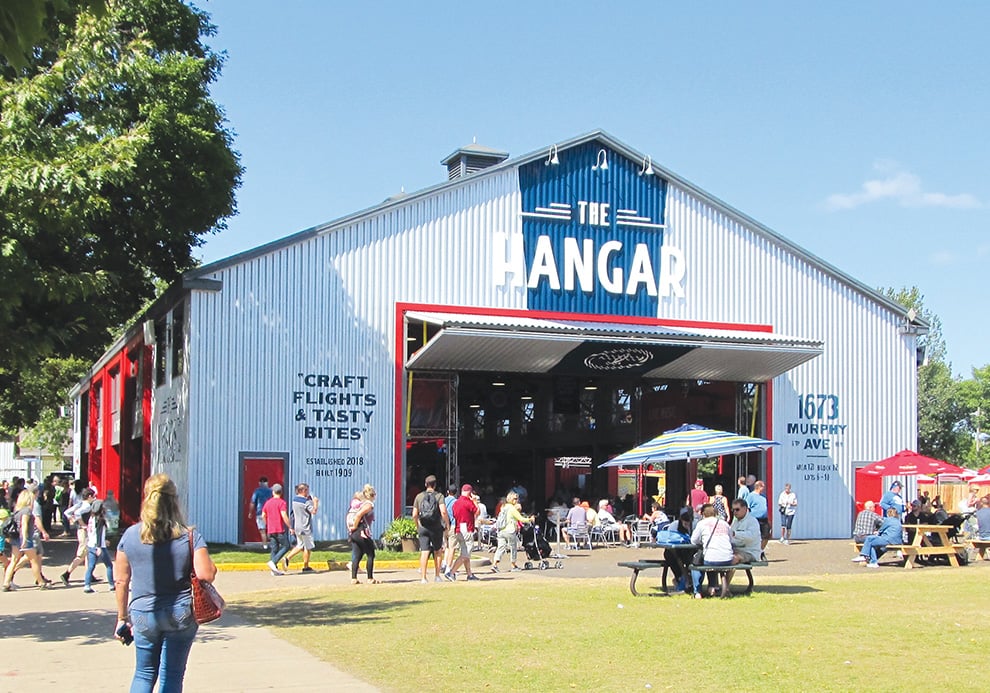
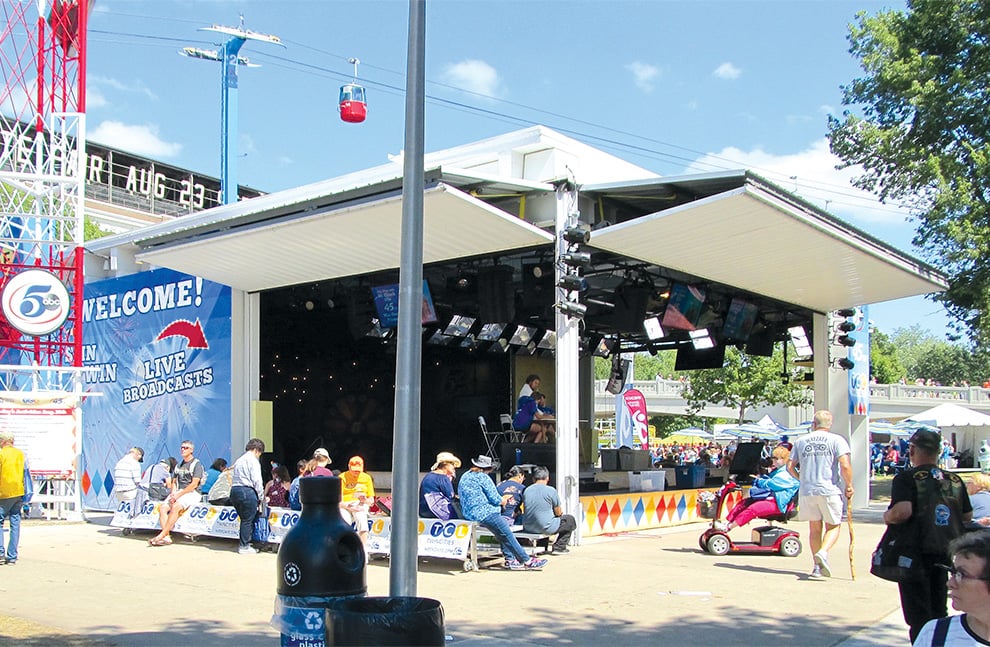
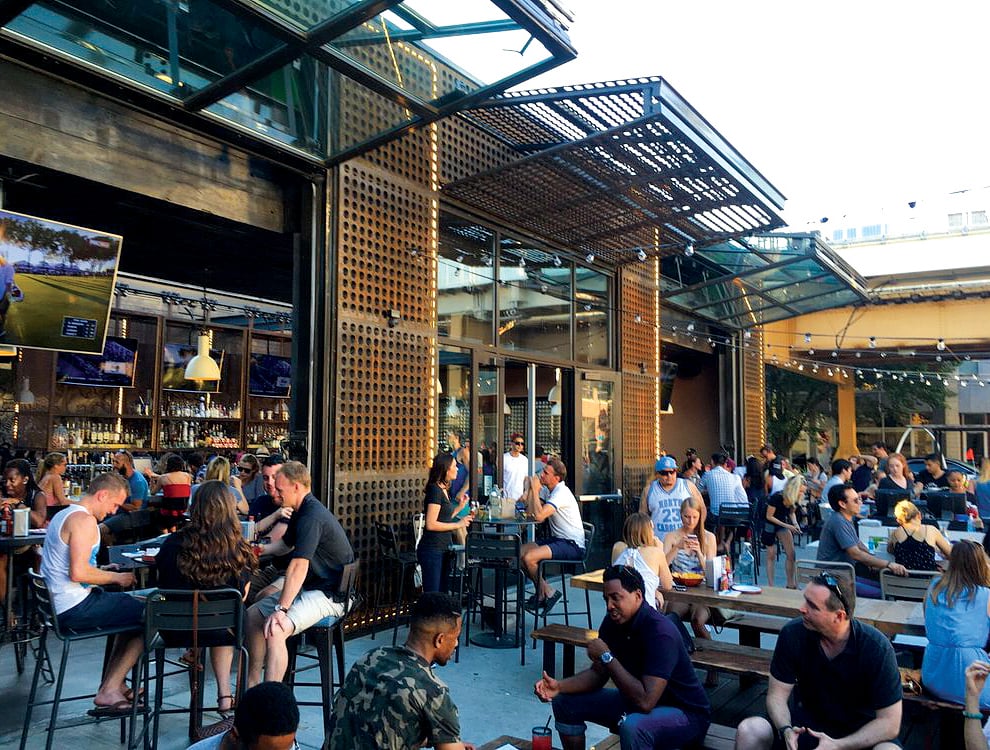
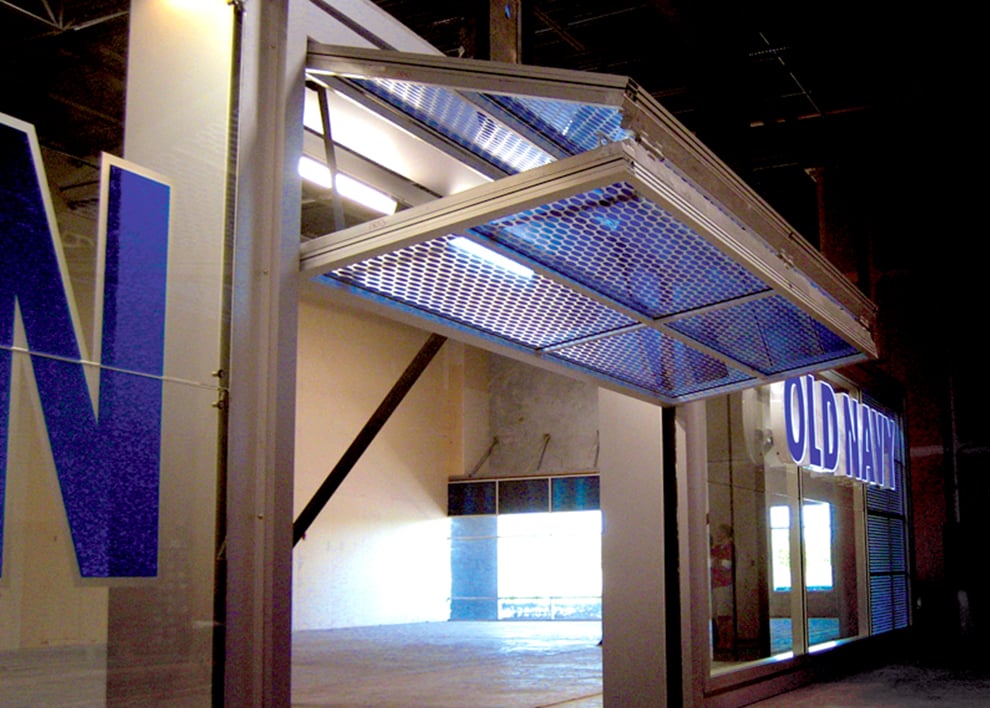

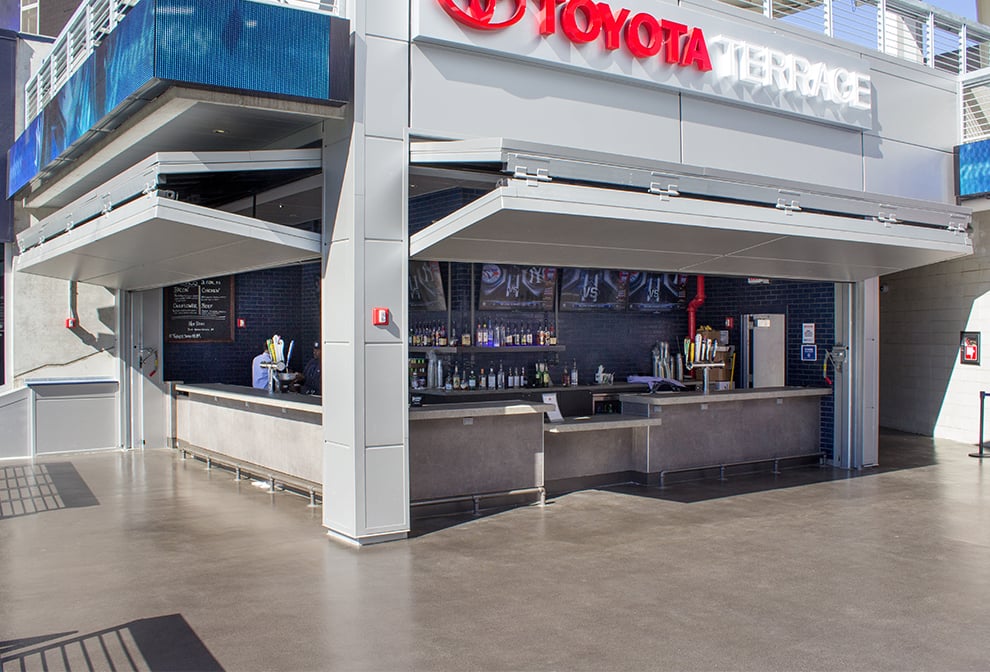
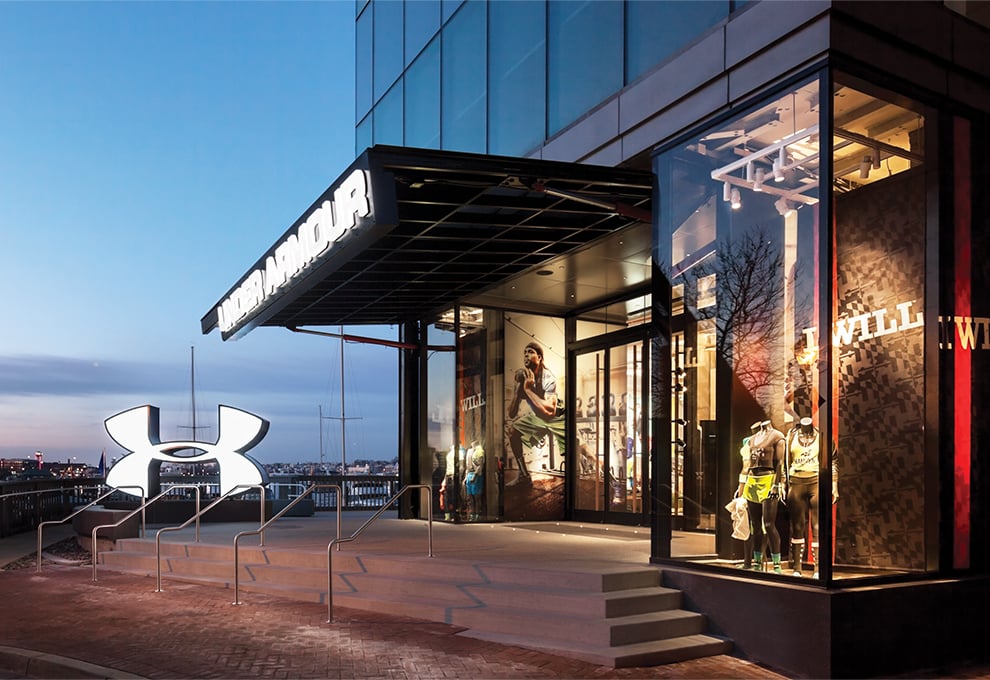



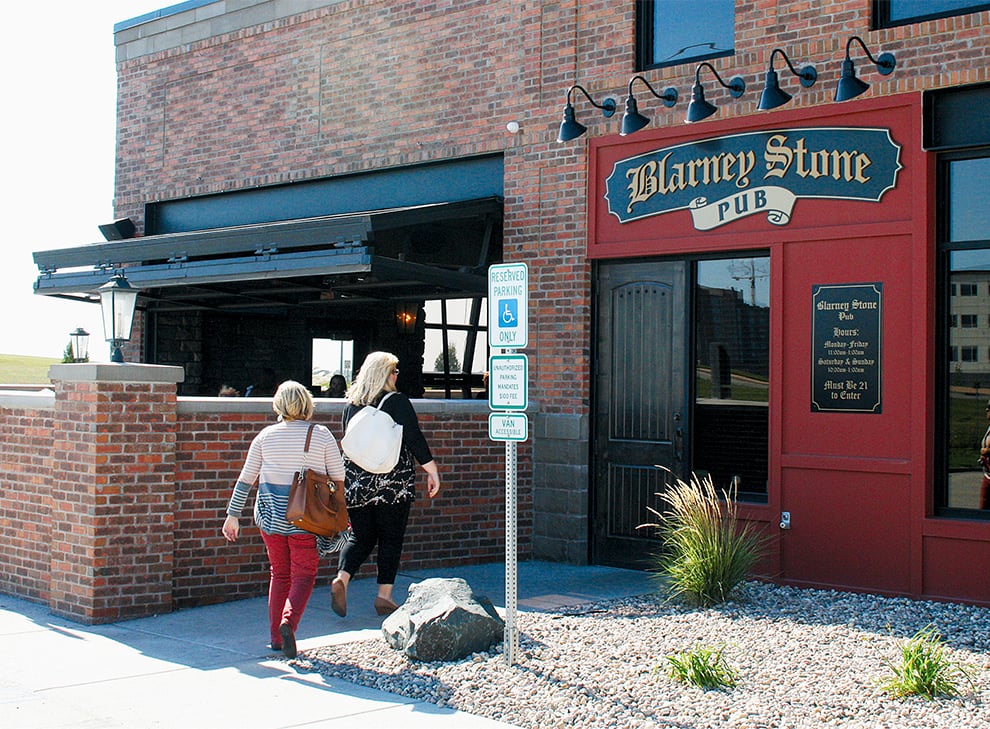
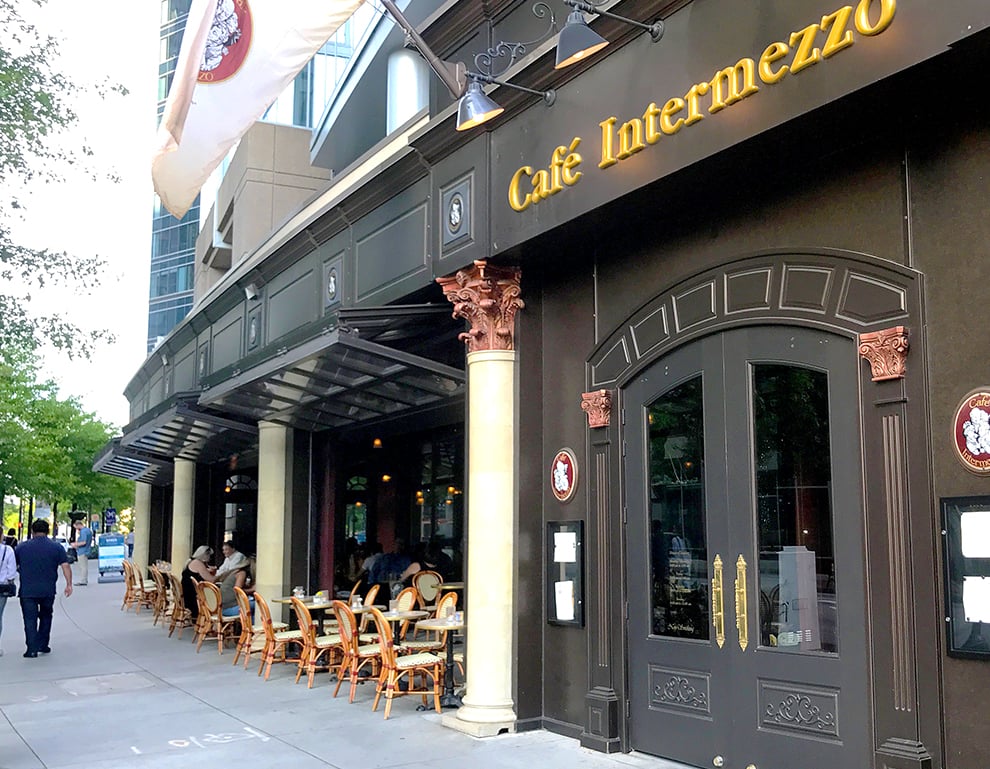
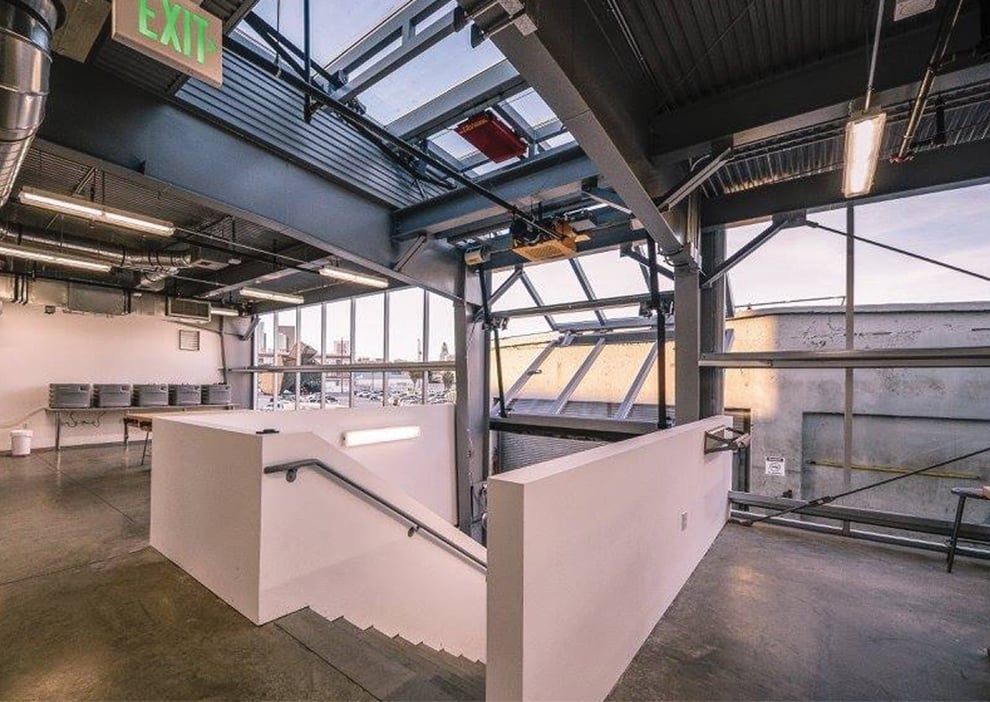
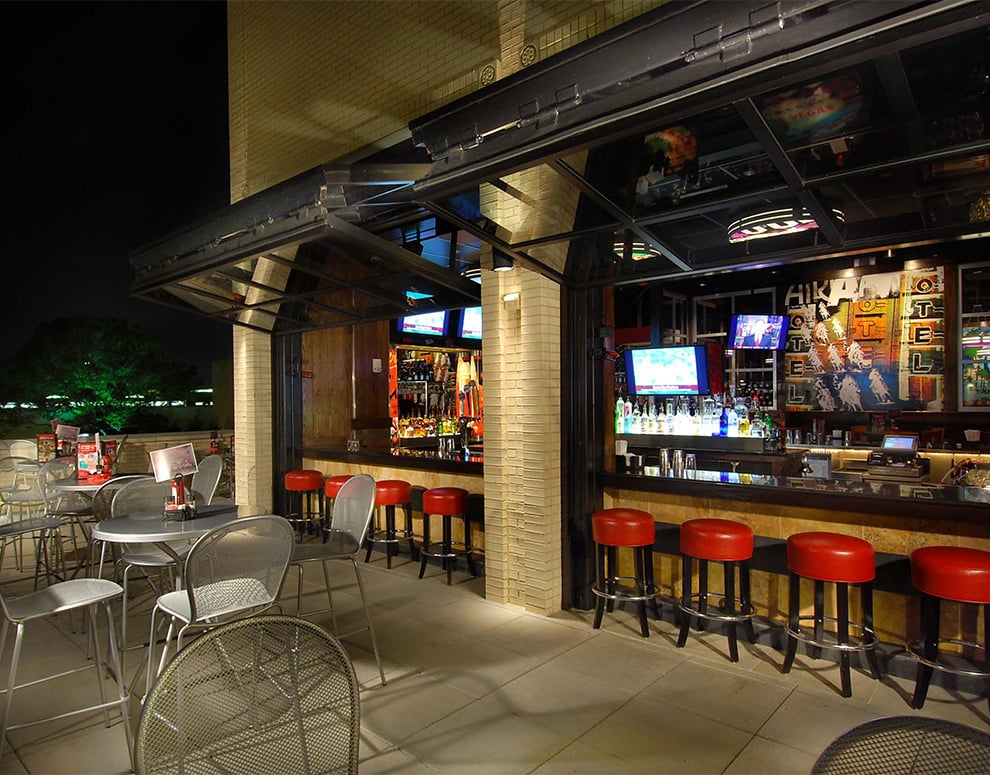
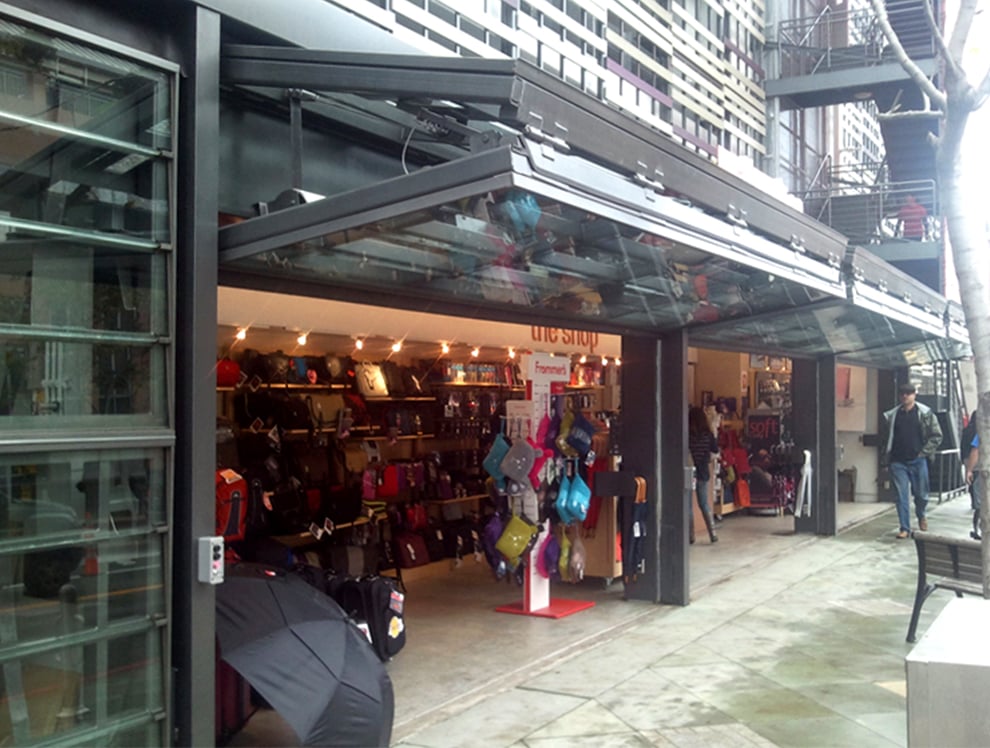
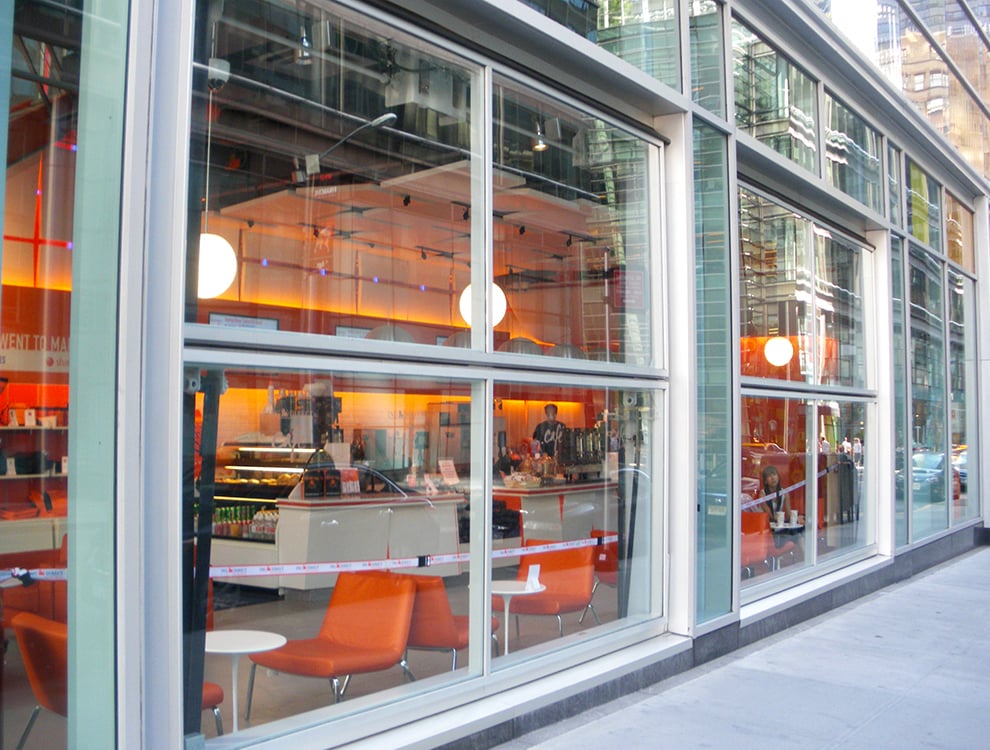
 Security Doors
Security Doors
